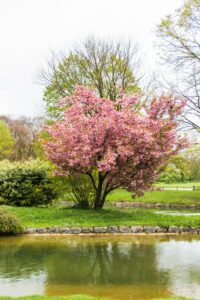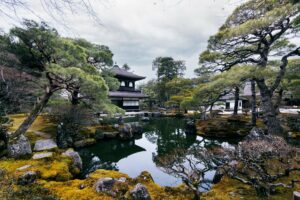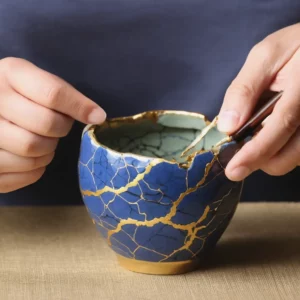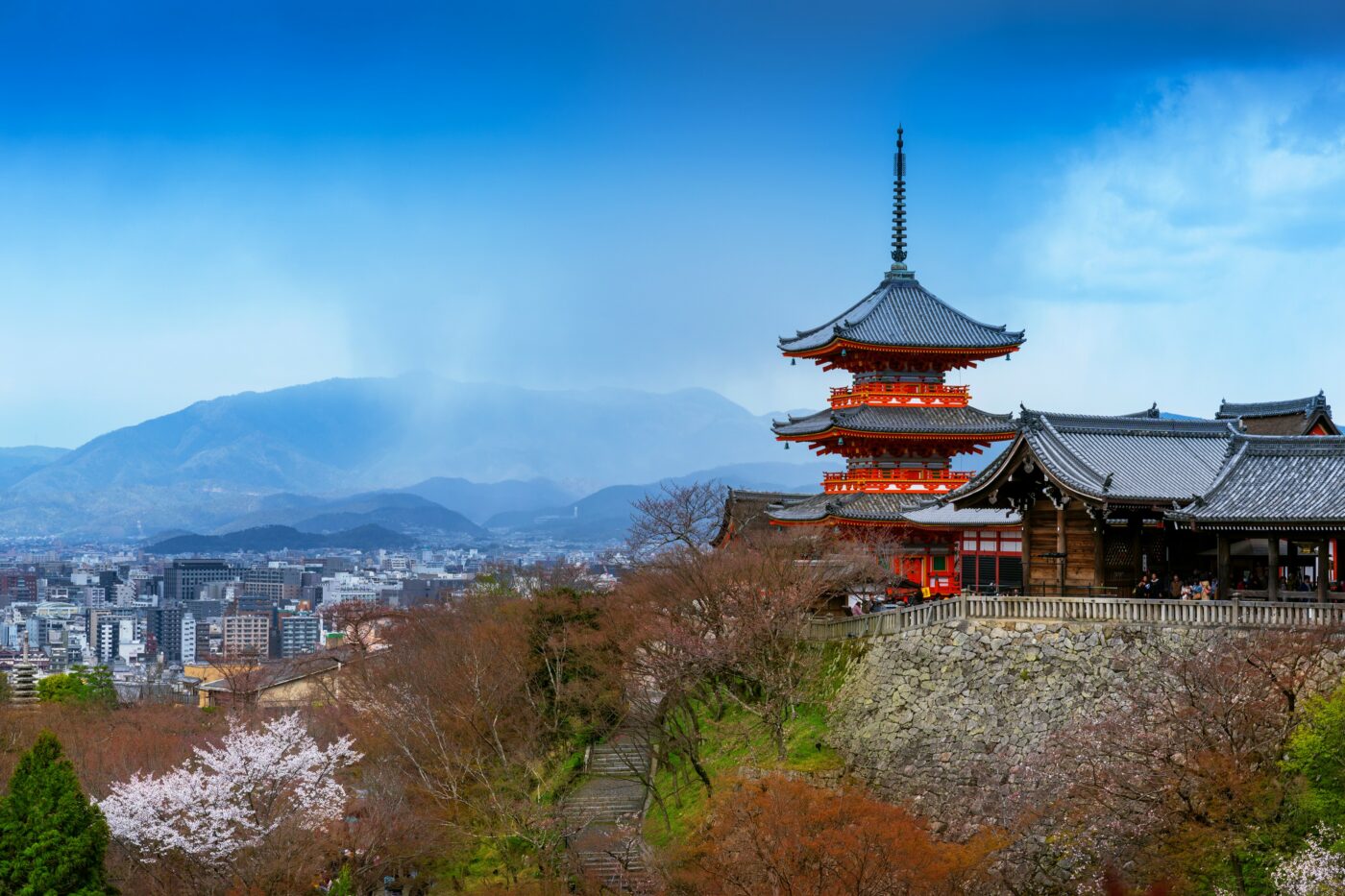Japan, where tradition meets modernity in perfect balance, is a captivating destination that combines ancient customs with advanced technology.
The country is especially renowned for its technological achievements and is at the forefront of innovation, from manufacturing to humanoid robots that help care for the elderly. A shining example of this progress is the Shinkansen, or bullet train, which has been speeding across the country since 1964.
Even though Japan is a highly developed country, it has managed to preserve its ancient and precious customs. In this blog post, we discover what makes Japan a true cultural wonder.

The wisdom of the Japanese mindset
To really get to know Japanese culture, we need to look at the importance of politeness, as this is essential in the Japanese language and culture. Relationships are not considered equal; there are different roles based on age, work hierarchy and teacher-student dynamics. The language incorporates various methods of expressing respect and humility, especially when interacting with individuals who are older or hold a higher position. However, conversations with friends allow for a more loose style and expression.
 In this cultural context, formal greetings are conducted in a distinctive manner. Rather than the conventional handshake, individuals engage in a subtle bow, inclining their upper bodies forward. This gesture signifies respect, serving as a form of reverence and a polite expression of courtesy.
In this cultural context, formal greetings are conducted in a distinctive manner. Rather than the conventional handshake, individuals engage in a subtle bow, inclining their upper bodies forward. This gesture signifies respect, serving as a form of reverence and a polite expression of courtesy.
The success of Japan is deeply rooted in the Japanese way of thinking and the wisdom they hold dear.
They believe in the connection between mental well-being and posture, proposing that improving posture positively impacts our thought processes.
This mindset not only shapes daily life, but also plays a role in promoting better physical health. The cultural emphasis on continuous improvement is crucial for individuals, driving them to constantly seek ways to optimise, particularly in the field of modern technology. It also fosters a strong sense of cooperation, encouraging citizens to become actively involved in their communities and encouraging collective effort towards common goals.
Not surprisingly, Japan has the world’s third largest economy after the United States and China. Japan is also at the forefront of urbanism, with cities like Tokyo using smart technology to manage traffic and reduce congestion.
Appriciating the natural beauty
 In modern times, the Japanese people have not become detached from nature, but have a deep admiration for its beauty. The sakura, also known as the cherry blossom, has served as a wellspring of inspiration for Japanese art, poetry, literature, and ceramics over the centuries. Symbolizing beauty, purity, and simplicity through its fleeting existence.
In modern times, the Japanese people have not become detached from nature, but have a deep admiration for its beauty. The sakura, also known as the cherry blossom, has served as a wellspring of inspiration for Japanese art, poetry, literature, and ceramics over the centuries. Symbolizing beauty, purity, and simplicity through its fleeting existence.
The tradition of cherishing these delicate flowers remains vibrant within society. Flower viewing festivals are held throughout Japan, with the timing varying by a few weeks depending on the flowering season. People gather at places and parks where these trees are found to enjoy picnics, conversations and family or social gatherings.
For centuries, Japan’s enchanting rock gardens, known as Zen gardens, have been deeply rooted in Japanese culture. They represent the Buddhist philosophy that meditation and relaxation can lead to Zen, or enlightenment. Beyond their visual appeal, these gardens have become popular places of meditation, attracting people from all over the world. Surprisingly, they can even be found on top of skyscrapers in vibrant cities such as Tokyo and Osaka.

Imperfections and contentment
As much as the Japanese appreciate the beauty of nature, they also appreciate imperfection, as demonstrated by an art form called ‘kintsugi’. It is the art of ‘repairing’ expensive ceramics. Broken parts are replaced with a different colour from the base colour of the vessel to highlight the imperfections, and this is where the object’s uniqueness and beauty lies.

Part of this art embodies the philosophy that the scars and challenges we encounter in life can serve as sources of strength and beauty. Central to this approach is the importance of satisfaction and acceptance. It emphasizes appreciating one’s current state and acknowledging past achievements. This is not merely an attitude; it’s a way of life encompassing gratitude for existence, work, and personal accomplishments.
Moreover, the Japanese mindset highly values simplicity, aiming to infuse beauty and joy into every facet of life.
Food and health and habits
Japan boasts an impressive life expectancy of 84 years, surpassing the global average and securing the second highest ranking in the world, according to the WHO. Now let’s delve into the distinctive realm of Japanese cuisine to understand what the Japanese eat and how these dietary practices play a role in their exceptional health.
Japanese cuisine, also known as ‘washoku’, represents a meticulous approach to cooking rice and side dishes, with the aim of preserving the inherent flavours of seasonal ingredients.
This culinary tradition, rooted in social customs dating back over a thousand years, has earned a prestigious place on the Representative List of the Intangible Cultural Heritage of Humanity. Beyond a mere culinary practice, it has become an art form that captures the essence of Japanese cultural heritage.
Japanese cuisine is characterised by balance and simplicity. It includes fresh seafood, vegetables rich in vitamins and minerals, and a variety of fermented foods, which are rich in probiotics to help with digestion.

A Japanese dietary concept called “hara hachibu” promotes health by eating just enough to satisfy hunger without feeling full. Incorporating umami flavour also helps to moderate food intake, as eating umami-rich foods makes you feel fuller more quickly, helping to maintain a healthy body weight.
Certainly, alongside healthy eating habits, exercise is also crucial for the Japanese, spanning from the younger generation to the elderly. Additionally, a common practice is bathing in natural thermal springs, which serves not only as a recreational activity but also as a health ritual. The minerals from the hot spring water are absorbed through the skin, assisting in strengthening the immune system. These culinary and lifestyle practices contribute to the longevity and well-being of the Japanese people.
Discover the cultural riches of Japan: Study opportunities
Embark on a journey to discover the cultural treasures of Japan by exploring the opportunities offered by the University of Pécs (PTE). While the application period for these programmes typically begins in the spring, take advantage of this time to gather valuable information and explore the diverse offerings of Japanese universities.
Sources and some additional captivating literature:
Robert C. Christopher:The Japanese mind: the Goliath explained
Alvin Horton:Ortho’s all about creating Japanese gardens
Boye De Mente: Az élet művészete: Japán ősi bölcsessége
Liza Crihfield Dalby: A cseresznyevirágok hölgye
Videos:
Japanese people and their unique culture
Japan: Where Tradition Meets Innovation, History Embraces Modernity, and Nature Unveils Its Beauty


Leave a Reply